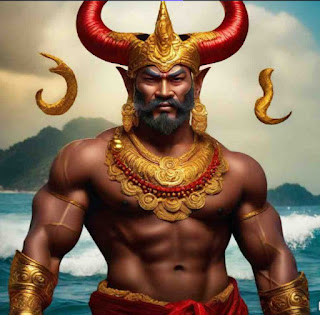Mythology is the symbolic nature of telling things, the interaction between different regions often shaped perceptions and mythologies. One fascinating aspect of this interaction was the contrasting views held by the Bicolano people of Ibalong regarding the Visayan gods, whom they saw as demons. This intriguing perspective can be understood through the historical context of the relationship between the regions.
The Bicol region, historically known as Ibalong, was a land of rich culture and diverse mythology. Its name has been variously interpreted, with meanings ranging from "to bring to the other side" to "where there is a river," reflecting the interconnectedness of its landscapes and communities. On the other hand, the Visayans, collectively referred to as Bisaya, resided in the Kabisay-an islands, encompassing a distinct cultural identity.
The Bicolanos of Ibalong and the Visayans were separated not just by geographical boundaries but also by distinct cultural practices and beliefs. The Visayans, fierce warriors adorned with tattoos, were known for their seafaring prowess. They would embark on raids, attacking peaceful colonies along the coastal areas, including those of Ibalong. These seaborne incursions created a tumultuous relationship between the two regions.
In the eyes of the Bicolano people, some Visayan gods were perceived as demons due to the visceral experiences of raids and conflicts. The tattoos that adorned the Visayan warriors, symbols of their strength and identity, became ominous markers of impending danger for the Bicolanos. The attacks led by the fierce tattooed warriors were not only physical assaults but also spiritual invasions that left an indelible mark on the psyche of the Ibalong community.
 |
| Kan-laon |
Kanlaon in Bicolano Mythology:
In the mythos of the Bicolano people, Kanlao(Kanlaon is a god from Visayas)n is an ominous figure associated with volcanic eruptions, wildfires, and earthquakes. Nestled within the fiery depths of Kanlaon Volcano, this malevolent deity commands the destructive forces of locusts and fire. The very elements that sustain life can, in the hands of Kanlaon, become instruments of chaos and devastation. As the harbinger of calamity, Kanlaon stands in stark contrast to the benevolent supreme deity Gugurang.
The enmity between Kanlaon and Gugurang adds layers to the narrative, portraying a cosmic struggle between opposing forces. Gugurang, the supreme deity in Bicolano mythology, assumes the role of a protector and creator. The clashes between Gugurang and Kanlaon symbolize the perpetual battle between creation and destruction, order and chaos.
 |
| Nagined, Magkaburak, Arapayan |
Tattoos, known as buri among the Bicolano people, took on a new significance as a form of protection against the foreign gods of the Visayans. The act of tattooing was not merely a cultural practice but a means of fortifying oneself against the perceived ferocity of the Visayan Mangagayaw or raiders. This adaptation of tattooing as a defensive measure illustrates how cultural practices can evolve in response to external threats and conflicts
As the Visayan gods were invoked during these violent encounters, the Bicolanos associated them with malevolence and chaos. The gods, representing the forces behind the raids and destruction, became synonymous with the demons that brought harm to Ibalong. This perception was further fueled by the challenges posed by cultural differences and territorial disputes.
The Bicolano perspective on the Visayan war gods as demons offers a poignant illustration of how historical conflicts and cultural clashes can reshape mythological interpretations. As we delve into the rich tapestry of Philippine mythology, it becomes evident that understanding these narratives requires a nuanced exploration of regional
In the intricate dance of historical narratives, the Bicolanos of Ibalong viewed the Visayan gods through the lens of conflict and strife. The tattoos that once signified strength and identity to the Visayans became, in the eyes of the Bicolanos, the markings of malevolent beings who, in the form of gods, brought havoc to their peaceful colonies. This interplay of regional dynamics showcases the complex ways in which perceptions are shaped by historical interactions and cultural clashes.



No comments:
Post a Comment
Note: Only a member of this blog may post a comment.